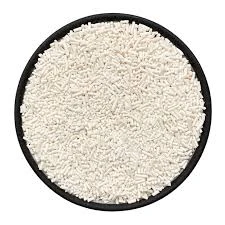
coloring agents in food
The Role of Coloring Agents in Food Enhancing Aesthetics and Quality
Color plays a pivotal role in our perception of food. It affects not only our appetite but also our overall dining experience. As a result, the use of coloring agents in food has become increasingly common. These agents, which can be derived from natural sources or synthesized chemically, serve to enhance the visual appeal of food products, making them more attractive to consumers. This article delves into the types of coloring agents used in food, their applications, and the implications for health and safety.
Types of Coloring Agents
Coloring agents can be broadly categorized into two groups natural and synthetic.
1. Natural Coloring Agents These are derived from plants, animals, and minerals. Common examples include beetroot red, derived from beets, and turmeric yellow, extracted from the turmeric root. Natural coloring agents are often favored by health-conscious consumers due to their perceived safety and the growing trend towards clean-label products. These agents not only provide color but can also impart additional nutritional benefits, such as antioxidants found in certain fruits and vegetables.
2. Synthetic Coloring Agents These are man-made and often provide a wider range of vibrant colors compared to their natural counterparts. Examples include Red 40 (Allura Red) and Yellow 5 (Tartrazine). While synthetic colors are often criticized for their potential health risks, they are widely used because they are stable, inexpensive, and can be produced in large quantities. Regulatory agencies, like the FDA, rigorously evaluate these agents for safety before approval for use in food products.
Applications of Coloring Agents in Food
Coloring agents have a myriad of applications across the food industry
. They are commonly used in- Confectionery Brightly colored candies and chocolates attract consumers, especially children. The use of vibrant colors can enhance the perceived flavor of these products.
coloring agents in food

- Beverages Color plays a crucial role in ensuring that drinks are visually appealing. From soft drinks to juices, coloring agents help create a consistent appearance that meets consumer expectations.
- Bakery Products From cakes to pastries, coloring agents are used to enhance the visual appeal of baked goods. This not only improves aesthetics but can also indicate flavors (e.g., a rich brown color in chocolate cakes).
- Dairy Products Yogurts and cheeses often contain coloring agents to standardize the appearance of products, making them more appealing and recognizable.
Health and Safety Considerations
While coloring agents enhance the visual appeal of food, there are concerns regarding their safety and potential health effects. Some synthetic coloring agents have been linked to allergic reactions and hyperactivity in children. As a result, some consumers prefer natural coloring agents, believing they are safer and healthier options. Regulatory bodies around the world monitor and regulate the use of these agents to ensure public safety. It is essential for consumers to stay informed about the ingredients in their food, including coloring agents, and their potential effects.
Consumer Trends and the Future of Coloring Agents
As awareness of food quality and health increases, consumer preferences are shifting toward natural and organic products. This trend is driving innovation in the food industry, prompting manufacturers to seek out natural alternatives to synthetic coloring agents. Additionally, advances in technology are enabling the extraction and stabilization of colors from natural sources, making them more accessible for widespread use.
In conclusion, coloring agents play a significant role in the food industry by enhancing the visual appeal of products while also influencing consumer perception and satisfaction. Both natural and synthetic agents have their place in food manufacturing; however, growing health awareness is reshaping the landscape. As consumers become more discerning, the demand for transparency and safety in food ingredients will continue to rise, paving the way for a future focused on healthier and more appealing food options.
-
Understanding Synthetic Rubber OptionsNewsApr.27,2025
-
Trichloroisocyanuric Acid: Essential for Clean and Safe WaterNewsApr.27,2025
-
Sodium Dichloroisocyanurate: Key to Safe Water TreatmentNewsApr.27,2025
-
Sodium Acid Pyrophosphate: Essential in Modern Food ProcessingNewsApr.27,2025
-
Essential Water Treatment ChemicalsNewsApr.27,2025
-
Denatured Alcohol and Its Industrial UsesNewsApr.27,2025
-
The Versatile Uses of Sodium BicarbonateNewsApr.24,2025
Hebei Tenger Chemical Technology Co., Ltd. focuses on the chemical industry and is committed to the export service of chemical raw materials.
-

view more DiethanolisopropanolamineIn the ever-growing field of chemical solutions, diethanolisopropanolamine (DEIPA) stands out as a versatile and important compound. Due to its unique chemical structure and properties, DEIPA is of interest to various industries including construction, personal care, and agriculture. -

view more TriisopropanolamineTriisopropanolamine (TIPA) alkanol amine substance, is a kind of alcohol amine compound with amino and alcohol hydroxyl, and because of its molecules contains both amino and hydroxyl. -

view more Tetramethyl Thiuram DisulfideTetramethyl thiuram disulfide, also known as TMTD, is a white to light-yellow powder with a distinct sulfur-like odor. It is soluble in organic solvents such as benzene, acetone, and ethyl acetate, making it highly versatile for use in different formulations. TMTD is known for its excellent vulcanization acceleration properties, which makes it a key ingredient in the production of rubber products. Additionally, it acts as an effective fungicide and bactericide, making it valuable in agricultural applications. Its high purity and stability ensure consistent performance, making it a preferred choice for manufacturers across various industries.











